- Home
- entertainment
- news
- 16 details you might have missed in 'Enola Holmes'
16 details you might have missed in 'Enola Holmes'
Claudia Willen

- Set in 1884, "Enola Holmes" is a mystery film following Sherlock Holmes' younger sister as she embarks on her first detective case.
- Though the Holmes siblings uncover many clues throughout the movie, there are plenty of hidden details and references that may slide under the radar upon first viewing.
- Warning: This post contains major spoilers for "Enola Holmes."
"Enola Holmes," an adaptation of the first installment of Nancy Springer's young adult book series, "The Enola Holmes Mysteries," premiered on Netflix on September 23.
The mystery follows Sherlock Holmes' 16-year-old sister Enola (Millie Bobby Brown) through the English countryside and into the heart of Victorian-era London as she flees her brothers in search of her missing mother, Eudoria Holmes (Helena Bonham Carter).
And while Sherlock (Henry Cavill) and Enola race each other to unravel the case, there are plenty of details and references folded into the story that can easily escape the audience's attention.
Keep reading to find out what you missed.
As a child, young Enola learned to play chess, which she later reveals as Sherlock's favorite game.
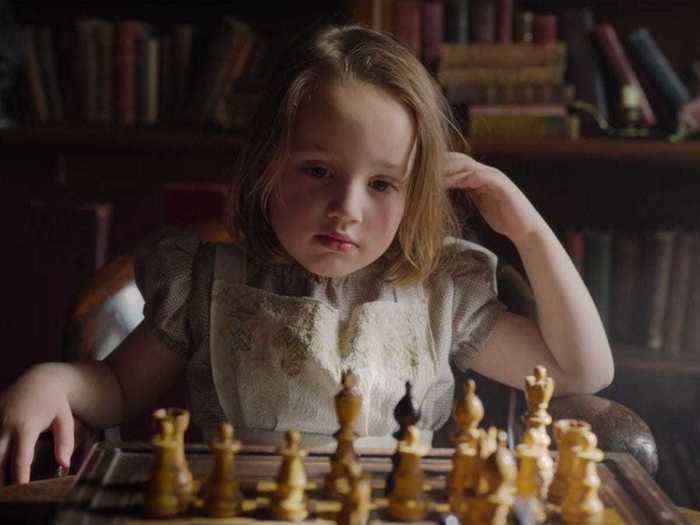
When Enola quizzes Inspector Lestrade (Adeel Akhtar) about Sherlock's favorite board game, she ends up answering her own question.
"Chess, but only with a worthy opponent," she tells him, a comment foreshadowing the film's outcome.
Enola, who viewers see learning to play chess as a young girl in flashbacks, proves to be the ultimate opponent for her brother, as she solves the case at Basilwether before him.
"The game is afoot" is a term that originated in William Shakespeare's "Henry IV, Part I."
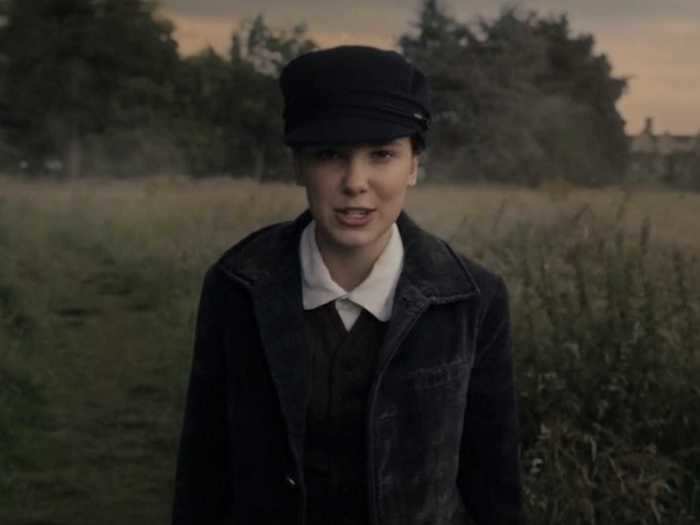
After Enola completes the first phase of her escape plan, she breaks the fourth wall and declares, "The game is afoot."
Though many of Arthur Conan Doyle's fans associate the phrase with Sherlock, it actually first appeared in William Shakespeare's "Henry IV, Part I."
"Before the game is afoot, thou still let'st slip," Shakespeare wrote.
Enola and Lord Tewkesbury break gender norms on the way into London.
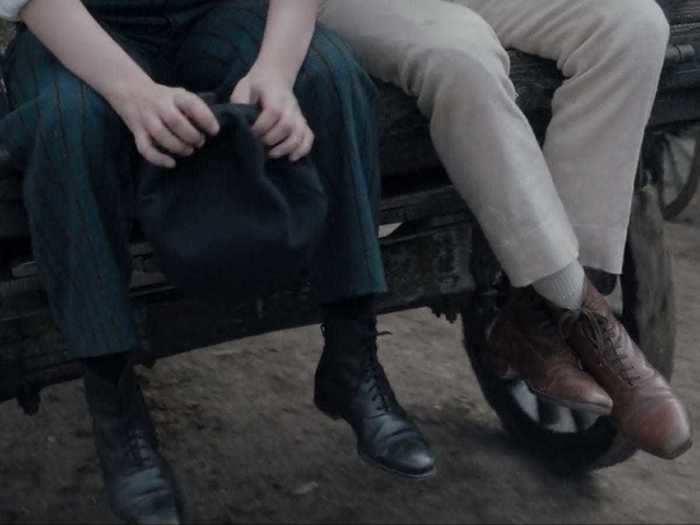
In a close-up shot showing Enola and Tewkesbury (Louis Partridge) arriving in London, their bodies are only visible from the waist down.
Enola, on the left, is still disguised in Sherlock's old clothes from her train ride in. She sits with her legs uncrossed, crouching forward with her forearms resting on her knees.
Tewkesbury, who's still wearing his three-piece suit, sits straight up beside her with his ankles crossed. His posture seems more like a "proper" Victorian lady's than Enola's stance.
Gender roles are a major theme in "Enola Holmes," so this shot appears to be yet another example of the main characters defying society's pre-written rules.
Limehouse was London's first Chinatown, which could explain the Chinese writing and dragon symbols.
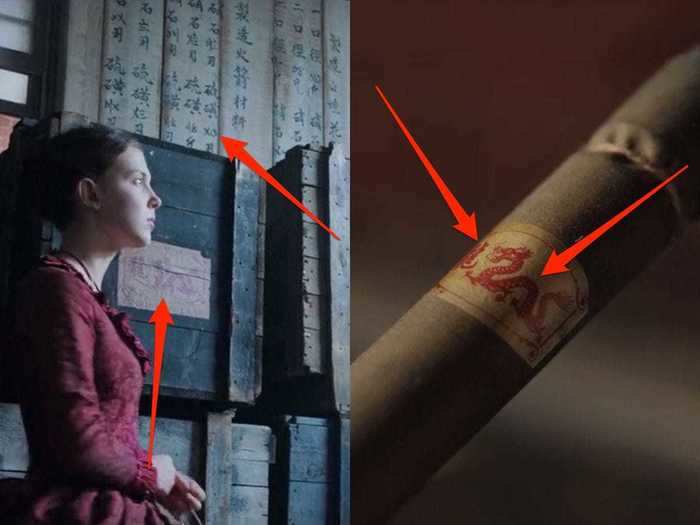
Eudoria's undercover activist work is headquartered in Limehouse Lane.
From the time Enola discovers the port-side neighborhood, she's surrounded by Chinese writing and red dragons, a symbol often used in Chinese folklore.
Though the reason behind the imagery isn't directly addressed in the film, it's possibly because London's first Chinese immigrant community formed in Limehouse in the early 19th century.
The sheep that Enola tried to save is a metaphor for Tewkesbury.
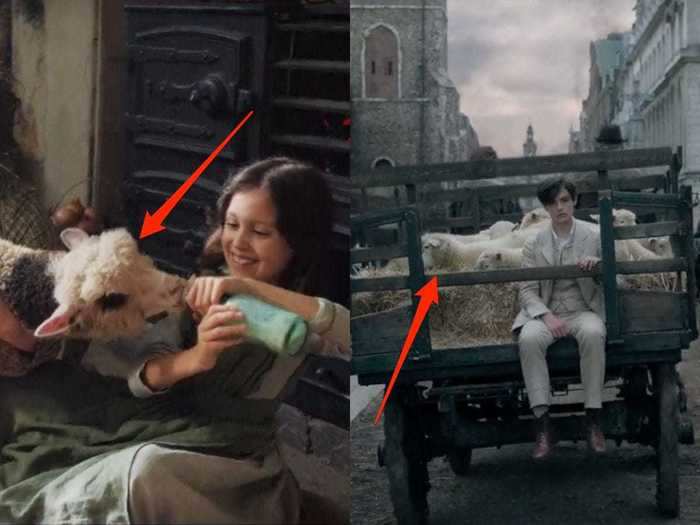
After Enola narrowly escapes from the assassin at Limehouse Lane, she tells the story of the time she tried to save a sheep from falling off a cliff, nearly dying in the process.
She then says: "The truth is, I did not ask for the Viscount Tewkesbury Marquess of Basilwether in my life. I did not want the Viscount Tewkesbury Marquess of Basilwether in my life."
Enola continues, "So why do I feel responsibility for the Viscount Tewkesbury Marquess of Basilwether? Because, there are those that want to hurt him, and he has not the strength to stop them, and I do have that strength."
Not only is Tewkesbury compared to the sheep in the story, but he actually appears in a cart of sheep, matching their wool in a similarly colored suit, on his journey into London.
The blue flower on Enola's card resembles the pressed flower in Tewkesbury's book.
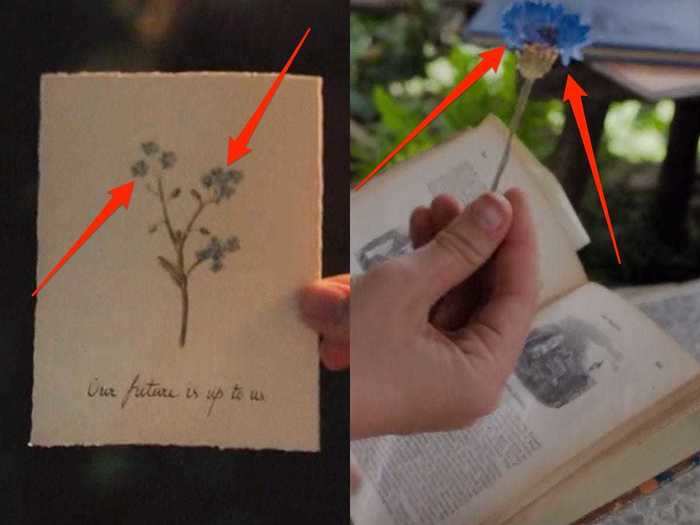
At the beginning of the film, Eudoria gives Enola a card that reads, "Our future is up to us."
When she first receives the gift, it seems obvious that the "our" in the message applies to Eudoria and Enola. But after Enola finds a strikingly similar-looking flower in Tewkesbury's book, it's up for interpretation as to whether or not that "our" extends to Tewkesbury as well.
A scene showing Eudoria, Enola's mother, picking apples from a tree could be an allusion to Eve in the Garden of Eden.
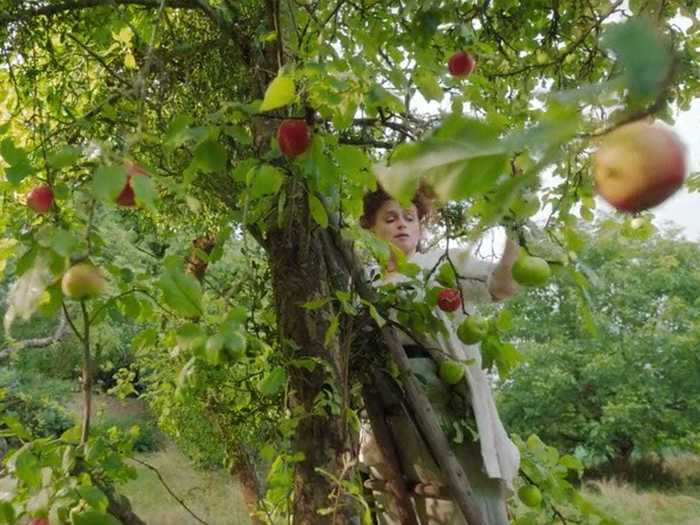
The audience gets to know Eudoria primarily through flashbacks, and in one of them, she's seen plucking an apple from a tree — just like Eve in Abrahamic religions' story of Adam and Eve.
After Eve, the first woman on Earth, ate a forbidden fruit from the tree of knowledge, God cursed her and Adam. They were expelled from the Garden of Eden and forced to live a life filled with pain and hard work.
Much like Eve was described in subsequent texts and analyses, Eudoria is labeled as "dangerous" and "wild" by those around her, so it makes sense that imagery of Eve appears in the film.
Enola and Eudoria set the stage for the teenager's gender-bending disguises in one of the movie's earliest scenes.

Throughout the film, Enola uses skills she learned from her mother to outsmart her brothers and solve her first case. One of the most frequently used lessons on her journey is knowing when to disguise herself as a boy.
In one of the earliest scenes, Enola speaks about Eudoria's insistence that they could "be anyone," sharing a flashback of both of them trying on fake mustaches.
This lesson is later mirrored when Enola holds a wig above her top lip in the dress shop, mocking her brother Mycroft Holmes' (Sam Claflin) mustache as she plans her next disguise.
The article in Sherlock's newspaper reveals that the man in the bowler hat wasn't seen on the train after Enola and Tewkesbury escaped.
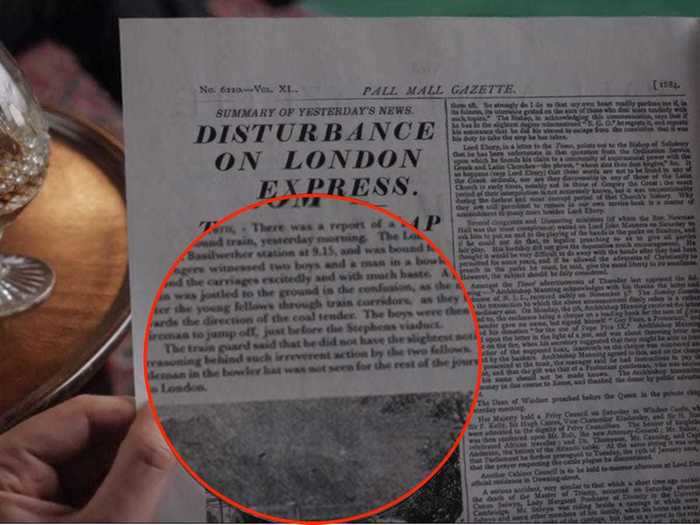
Many of the clues found by characters in "Enola Holmes" materialize from newspaper listings, but there are some pieces of information that don't get pointed out to viewers.
Sherlock reads the Pall Mall Gazette article about the two boys, which viewers know to actually be Enola and Tewkesbury, that jumped from a train headed toward London.
Upon closer look, viewers can see that the article also mentions that a man in a bowler hat "was not seen for the rest of the journey to London."
It isn't clear what happened to the assassin after Enola and Tewkesbury leaped from the train, so this piece of information means that he's likely still out looking for them.
Enola references the very real battle that women have undertaken to become recognized in the Royal Academy of Arts.
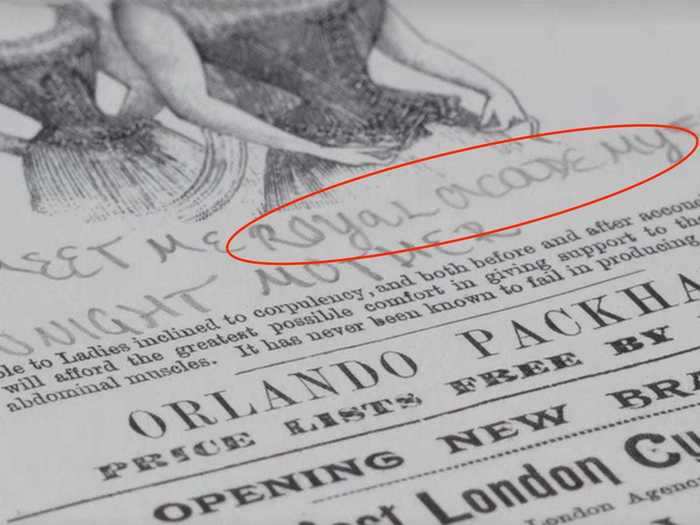
Sherlock tries to trick his sister into meeting him at the Royal Academy of Arts in London by pretending to be Eudoria.
Enola is immediately tipped off at the unlikely nature of the proposed meeting place, as the Royal Academy is "an institution that has consistently neglected to include women."
Her claim is seeded in truth.
The Royal Academy was founded in 1768 with two female founding members. And though they were technically included in the institution, they were prohibited from attending life classes.
What's more, another female member wasn't elected to the Royal Academy until 1860, years before the time period when "Enola Holmes" was set. And even as more women were accepted into the institution, they made sure that they didn't outnumber men.
Enola read about Joan of Arc as part of her education.
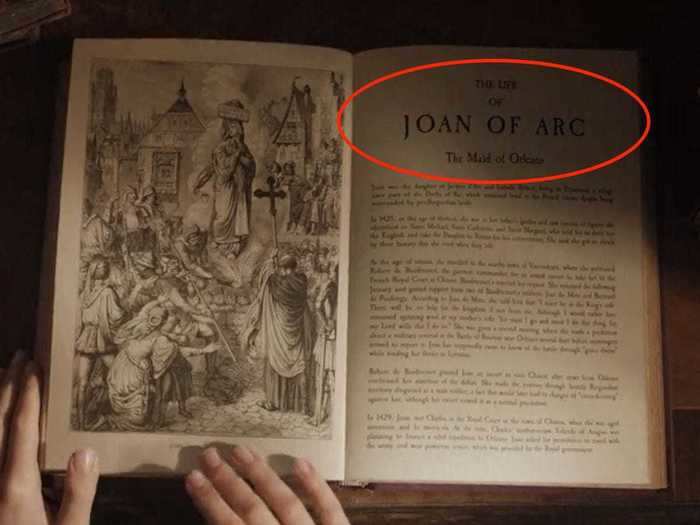
It's no secret that Eudoria exposed her daughter to stories about brave women from the time she was born.
One of those stories was about the French-teenager-turned-Catholic-saint Joan of Arc. The peasant child told King Charles VII about a vision sent from archangels instructing her to help France free itself from England in the Hundred Years' War.
Joan even fought in battle over the city of Orléans before being captured, put on trial, and burned at the stake, later becoming a Catholic saint and symbol of strength.
She also learned about the myth of Thalestris, a warrior queen.
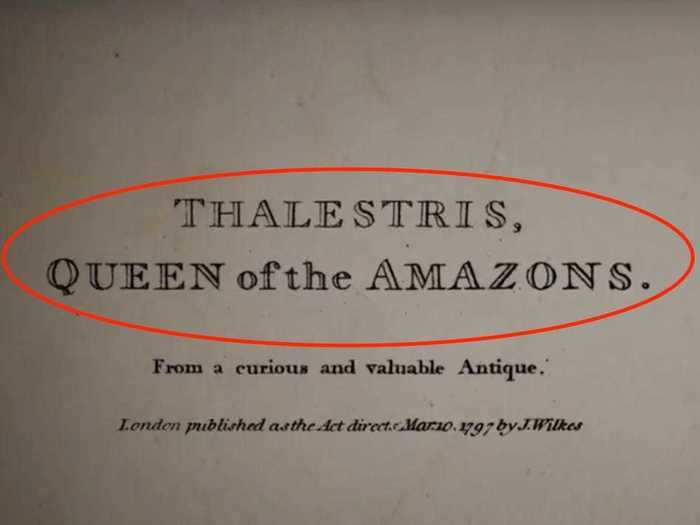
Part of Enola's homeschooling curriculum was reading the mythologized story of Thelastris, queen of the Amazons, and Alexander the Great, as she briefly showed in the beginning of the film.
And like Joan of Arc, Thelastris is a fierce historical figure, which is likely the reason Eudoria included her story in the syllabus.
According to the legend, she and 300 of her female warriors traveled to meet Alexander, as Thelastris was determined to conceive a child with him. They spent 13 days and nights together, and once Thelastris was sure she'd been impregnated, she and her guards left.
Some accounts of the myth assert that Thelastris promised to return their child to Alexander if it was a boy, a future heir to the throne. But if she gave birth to a daughter, Thelastris could keep her.
Enola's widow costume gives away the culprit of the crime.
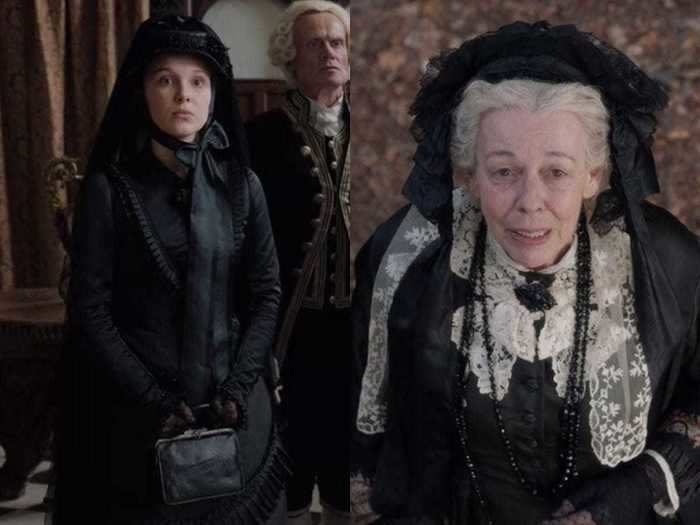
Enola wears head-to-toe black while traveling to Basilwether to sniff out clues. During the carriage ride, she explains her rationale.
"When looking to travel incognito, it's safest to travel as a widow," she says. "People are always anxious to avoid conversations about death."
While the outfit doesn't save Enola from getting kicked out of the estate, viewers later realize that she ended up being right about the disguise, as no one suspects The Dowager (Frances de la Tour) of being behind her son's murder.
In fact, even Enola suspects Tewkesbury's uncle before his grandmother.
Enola has a vase of Chrysanthemums in her flat.
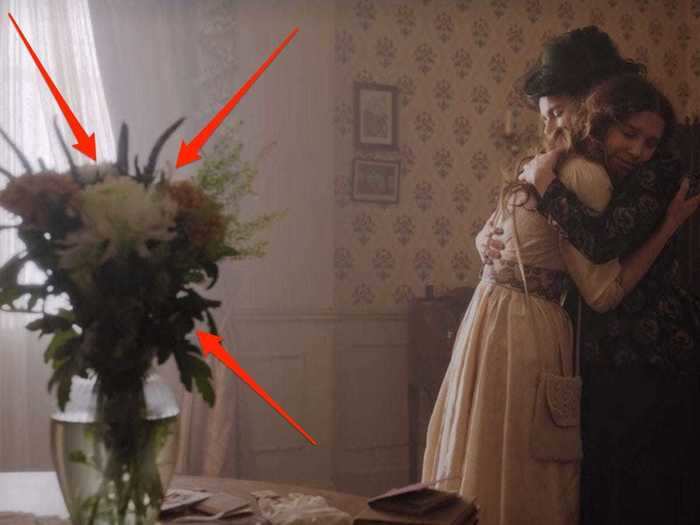
In one of the first clues that Eudoria left behind, Enola learns that "the bestowing of Chrysanthemums indicates familial attachment and, by implication, affection."
From there on out, Chrysanthemums become a code between the mother-daughter duo, so it's only fitting that Enola has a vase of the flowers in her flat when she finally reunites with her mother.
Even though Edith refuses to tell Enola what her mother is doing in London, the answer lies right beside her on the desk.
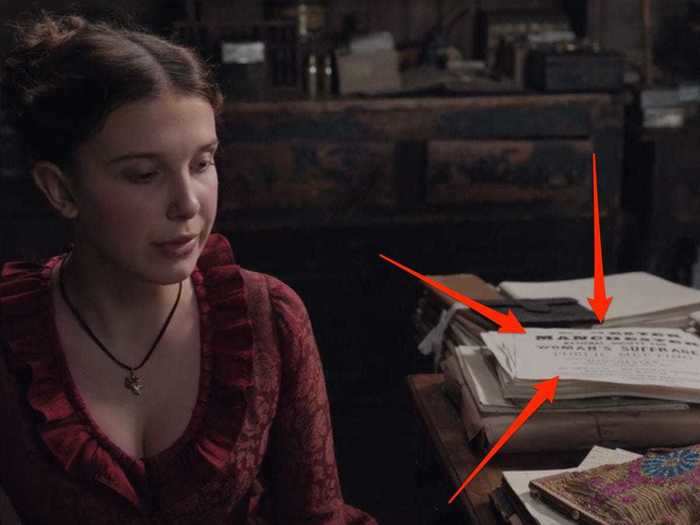
Enola tracks down Edith (Susan Wokoma), Eudoria's friend and fellow activist, to learn about her mother's whereabouts.
However, Edith tells Enola that she "cannot say" what Eudoria is doing in London, or why she's hiding.
The answer lies on the table next to Enola, though she doesn't see the flyers with the words "woman's suffrage" emblazoned across them.
Eudoria was reading a then-controversial essay called "The Subjection of Women" before she disappeared.
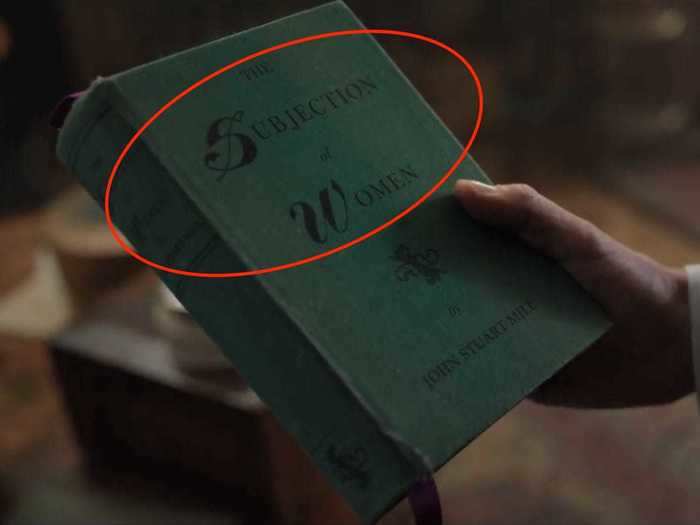
As Mycroft searches his mother's quarters for hints about her disappearance, he comes across "The Subjection of Women," an essay published by John Stuart Mill in 1869.
"Oh, good God! Feminism," Mycroft says while looking at the book, adding, "Perhaps she was mad, or senile."
In the essay, Mill argues for equal rights between men and women, pointing out that women have never had the opportunity to live up to their potential since society only permits them to take on subservient roles.
READ MORE ARTICLES ON
Popular Right Now
Popular Keywords
Advertisement